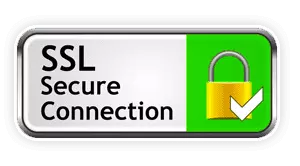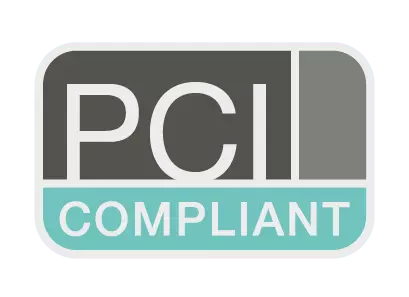John Deere 17ZTS Excavator Operator's Manual (OMT185582)
Catalog:
Model:
Price: US$ 25.00
John Deere 17ZTS Excavator Operator's Manual (OMT185582)
omt185582 - John Deere 17zts excavator Operator's Manual.pdf
Complete Operator's Manual for John Deere 17ZTS Excavator, with all the shop information to maintain & operate your excavator.
PRODUCT DETAILS:
Total Pages: 405 pages
File Format: PDF (Internal Links, Bookmarked, Table of Contents, Searchable, Printable, high quality)
Language: English
omt185582 - 17zts excavator
Table of Contents
Introduction
Emissions Control Warranty Statement
Technical Information Feedback Form
Section 05: Safety
John Deere Compact Excavator Safety Features
Use Allied Equipment Information
Recognize Safety Information
Understand Signal Words
Follow Safety Instructions
Avoid Injury From: Loading Machine On A Trailer, Fastening Machine To Trailer, Unloading Machine From Trailer ---------------------------------- Always Use Caution When Loading And Unloading Machines On A Trailer ---------------------------------- Always Know And Follow The Recommended Procedures For The Machine, Because All Machines Are Not Loaded, Fastened, And Unloaded The Same Way ---------------------------------- Always Keep Bystanders Clear Of The Area
Avoid Injury From Backover Accidents ---------------------------------- Before Moving Machine, Be Sure All Persons Are Clear Of Area ---------------------------------- Always Be Alert For Bystanders Moving Into The Work Area. Use Horn Or Other Signal To Warn Bystanders Before Moving Machine ---------------------------------- When Using A Signal Person, Keep Person In View At All Times, Be Sure Signal Person Is Clear Before Backing Up
Avoid Injury From Rollaway Accidents -------------------------------- To Prevent Rollaway, Always Make Sure Machine Is Properly Secured Before Leaving Operator’s Seat -------------------------------- Death Or Serious Injury May Result If You Attempt To Mount Or Stop A Moving Machine
Inspect Machine
Use Handholds and Steps
Use Seat Belt
Maintain Seat Belt
Move and Operate Machine Safely
Operate Only from Operator's Seat
Operate Machine Safely
Dig with Caution
Operate With Caution
Avoid Tipping
Avoid Power Lines
Drive Machine Safely
Beware of Exhaust Fumes
Park Machine Safely
Keep Riders Off Machine
Operate Attachment Safely
Handle Fluids Safely-Avoid Fires
Prepare for Emergencies
Handle Starting Fluid Safely
Clean Trash From Machine
Protect Against Flying Debris
Wear Protective Clothing
Protect Against Noise
Handle Chemical Products Safely
Warn Others of Service Work
Stay Clear of Moving Parts
Support Machine Properly
Service Cooling System Safely
Practice Safe Maintenance
Remove Paint Before Welding or Heating
Avoid Heating Near Pressurized Fluid Lines
Avoid High-Pressure Fluids
Prevent Battery Explosions
Clean the Machine Regularly
Store Attachments Safely
Dispose of Waste Properly
Section 06: Safety Signs
Safety Signs
Section 10: Operator’s Station
Pedals and Levers
Monitor Panel and Switches
Monitor Panel
Engine Pre-Heat Indicator
Engine Oil Pressure Indicator
Alternator Voltage Indicator
Fuel Gauge and Fuel Level Indicator
Engine Coolant Temperature Gauge and Engine Coolant Temperature Indicator
Hour Meter
Operating Light Switch
Key Switch
Tool Box (1)
Operator’s Manual Compartment
Section 20: Pre-Start Inspection
Inspect Machine Daily Before Starting
Section 25: Operating the Engine
Check Instruments Before Starting
Engine Speed Control Lever
Starting the Engine
Using Booster Batteries-12 Volt System
Check Instruments After Starting
Warming the Machine
Cold Weather Warm-Up
Stopping the Engine
Section 30: Driving the Machine
Travel Levers
Fast Speed Travel Pedal
Travel Alarm and Travel Alarm Cancel Switch
Parking the Machine
Parking Machine During Freezing Weather
Section 35: Operating the Machine
Excavator Control Pattern
Changing Control Lever Pattern
Backhoe Control Pattern
Pilot Control Shut-Off Lever
Boom-Swing Pedal
Option Pedal
Operating Backfill Blade
Operating Tips-Backfill Blade
Operating Tips
Driving Machine
Select Correct Track Shoes
Driving On Slopes
Driving Up a Slope
Driving Down a Slope
Parking and Stopping On a Slope
Grading
Planning Spoil Piles
Trenching
Backfilling
Truck Loading
Operating In Water and Mud
Clean Track Frame Area
Lower Boom With Engine Stopped
Hydraulic Breaker and Crusher Attachments
Section 40: Transporting
Loading Machine On a Trailer
Fasten Machine to Trailer
Transporting Machine With Rubber Tracks
Unloading Machine From Trailer
Towing Machine a Short Distance
Lifting the Machine
Section 45: Fuels and Lubricants
Diesel Fuel
Bio-Diesel Fuel
Lubricity of Diesel Fuels
Low Sulfur Diesel Fuel Conditioner
Diesel Fuel Storage
Fuel Tank
Do Not Use Galvanized Containers
Diesel Engine Oil
Hydraulic Oil
Travel Gearbox Oil
Track Roller, Front Idler, and Carrier Roller Oil
Track Adjuster, Working Tool Pivot, Swing Bearing, and Swing Bearing Gear Grease
Oil Filters
Lubricant Storage
Alternative and Synthetic Lubricants
Mixing of Lubricants
Section 50: Periodic Maintenance
Service Your Machine at Specified Intervals
Check the Hour Meter Regularly
Use Correct Fuels and Lubricants
Prepare Machine for Maintenance
Hood and Access Cover
Maintenance and Repair Record Keeping System
Fluid Analysis Program Test Kits and 3-Way Coolant Test Kit
Maintenance and Repair Record Keeping System
Section 55: Maintenance-As Required
Clean Radiator Core
Clean Air Cleaner Element
Section 60: Maintenance-Every 10 Hours or Daily
Check Engine Oil Level
Check Hydraulic Oil Level
Drain Fuel Tank Sump
Check Recovery Tank Coolant Level
Check Bucket Teeth
Drain Water Separator
Check Track Sag-Rubber Track
Check Track Sag-Steel Track, If Equipped
Adjusting Track Sag
Rubber Track Care
Removing Rubber Track
Installing Rubber Track
Converting the Track
Seat Belt
Section 65: Maintenance-Every 50 Hours
Grease Bucket Pivot Pins
Inspect Fan Belt, Check and Adjust Tension
Section 75: Maintenance-Every 250 Hours
Change Engine Oil and Replace Filter
Check Travel Gearbox Oil Level
Drain Hydraulic Tank Sump
Replace Hydraulic Tank Oil Filter
Replace Fuel Strainer
Section 80: Maintenance-Every 500 Hours
Grease Working Tool Pivots
Grease Swing Bearing
Grease Swing Bearing Gear
Grease Control Lever Universal Joint
Replace Fuel Filter
Replace Air Cleaner Element
Check Coolant In Radiator
Drain Cooling System
Diesel Engine Coolant
Cooling System Fill and Deaeration
Section 85: Maintenance-Every 1000 Hours
Change Travel Gearbox Oil
Replace Pilot Control Oil Filter
Check and Adjust Engine Valve Lash (Clearance)
Check Starter and Alternator
Change Hydraulic Oil
Section 90: Maintenance
Do Not Service Injection Nozzles
Do Not Adjust Injection Pump
Bleeding the Fuel System (Automatic Bleeding Procedure)
Precautions for Alternator and Regulator
Handling Batteries Safely
Service Batteries Carefully
Checking Electrolyte Specific Gravity
Using Battery Charger
Welding On Machine
Replacing Fuses
Fuse (Blade-Type) Color Codes
Electrical Socket
Checking Travel Alarm System
Installing Bucket With Quick Coupler
Do Not Service Control Valves, Cylinders, Pumps or Motors
Track Sag General Information
Hardware Torque Specifications
Unified Inch Bolt and Screw Torque Values
Metric Bolt and Screw Torque Values
Additional Metric Cap Screw Torque Values
Check Oil Lines and Fittings
Service Recommendations for O-Ring Boss Fittings
Service Recommendations For Flat Face O-Ring Seal Fittings
Service Recommendations for 37° Flare and 30° Cone Seat Connectors
Service Recommendations for Flared Connections-Straight or Tapered Threads
Service Recommendations For Inch Series Four Bolt Flange Fittings
Service Recommendations for Metric Series Four Bolt Flange Fitting
Section 95: Operational Checkout
Operational Checkout
Section 100: Troubleshooting
Using Troubleshooting Charts
Engine
Electrical System
Hydraulic System
Section 105: Storage
Prepare Machine for Storage
Monthly Storage Procedure
Section 110: Machine Numbers
Record Product Identification Number (PIN)
Record Engine Serial Number
Keep Proof of Ownership
Keep Machines Secure
Section 115: Specifications
17ZTS Excavator
Working Ranges
Engine Specifications
Drain and Refill Capacities
Lift Capacity-KG (LB) (Blade Off the Ground With Standard Arm and Rubber Track)
Lift Capacity-KG (LB) (Blade On the Ground With Standard Arm and Rubber Track)
Section CLIS: Checklists
Maintenance and Repair Record Keeping System
Section SLIT: John Deere Service Literature Available
Technical Information







